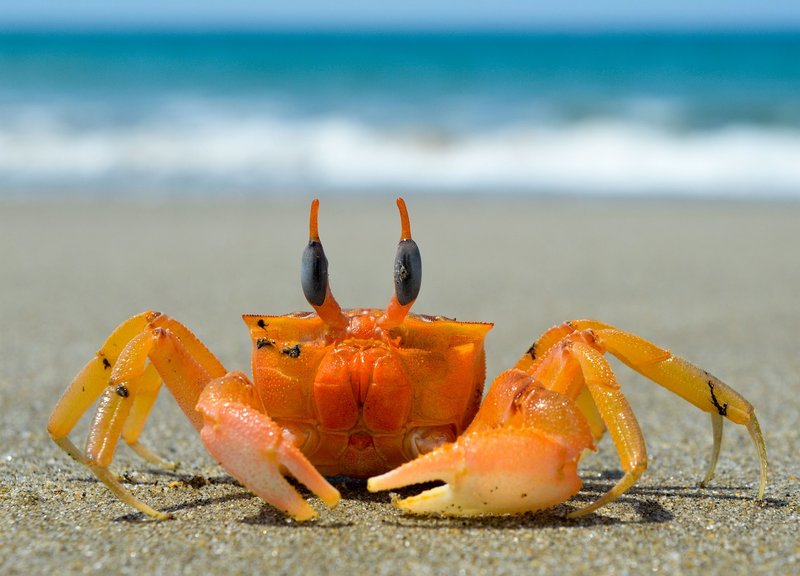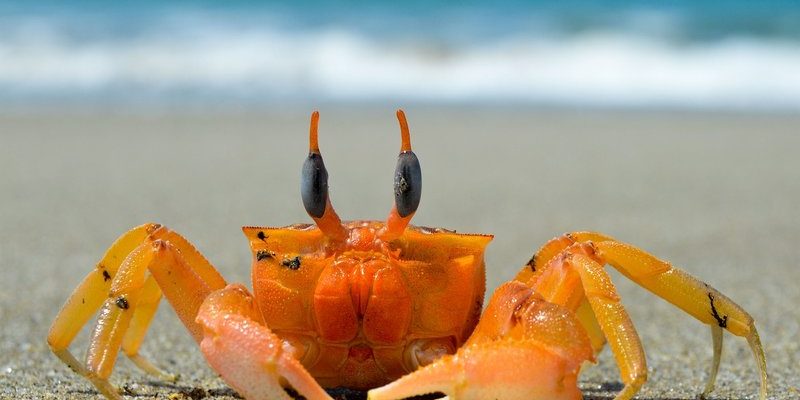
In this article, we’ll dive into the fascinating world of crabs and explore where exactly these creatures are found. You’ll learn about their habitats and how different species adapt to various environments. So grab a cup of coffee, and let’s get started!
Oceans: The Cradle of Crab Life
Oceans are the primary home for many crab species. Picture the vast expanse of water teeming with life. Crabs inhabit both shallow coastal waters and deeper ocean floors. Coastal crabs, like the popular blue crab, are often found in estuaries and bays where saltwater and freshwater mix. These areas are rich in nutrients and provide plenty of food sources, making them ideal homes for young crabs.
Deeper in the ocean, you’ll find species like the king crab, which prefers colder waters. The deep-sea environment offers crabs protection from predators while also providing unique food sources, such as detritus and other marine organisms. The adaptability of crabs speaks to their evolutionary success—different species have found ways to thrive in varying conditions, from tropical reefs to icy polar waters.
Coastal Habitats
In coastal areas, crabs often have to contend with changing tides and varying salinity levels. Species like the sand crab and the fiddler crab have developed unique adaptations to survive these shifts. For example, sand crabs are masters of camouflage, blending seamlessly into their sandy environments, making it tough for predators to spot them.
Fiddler crabs are known for their distinctive claws, with males boasting one oversized claw used for attracting mates and warding off rivals. This claw is crucial for their survival and plays a vital role in their social interactions. You might catch these quirky little guys waving their claws to communicate with others. It’s a fascinating behavior that showcases just how diverse crab life can be along the coast!
Freshwater Habitats: Crabs in Rivers and Lakes
While you might think crabs are strictly ocean dwellers, many species also call freshwater habitats home. Freshwater crabs, like the Thai crab and the red-claw crab, can be found in rivers, lakes, and ponds. These crabs have adapted to live in environments where the salt content is much lower than in the ocean.
Living in freshwater environments comes with its own challenges. Crabs must cope with varying water levels, temperature changes, and the presence of predators like fish and birds. To thrive, these crabs often burrow into riverbanks or create homes among aquatic plants, offering them some cover from threats.
Life in Streams and Ponds
In streams and ponds, you’ll often observe crabs engaging in social behaviors. They interact with one another, often in fascinating ways. For instance, when a predator approaches, crabs may communicate through signals or even band together to increase their chances of survival. This teamwork is a survival strategy that you might find interesting!
Water quality is crucial for freshwater crabs. They rely on clean environments to thrive, so pollution can be a serious threat to their populations. Understanding their role in these ecosystems is important, as they help maintain balance in freshwater habitats.
Land-Dwelling Crabs: The Terrestrial Adaptations
You might be surprised to learn that some crabs live entirely on land! Terrestrial crabs, like the coconut crab and the land hermit crab, have adapted to life away from the water. The coconut crab, for instance, is known for its incredible ability to climb trees and crack open coconuts. It’s a true testament to adaptability!
These land-dwelling crabs still need moist environments to survive. They often stay close to the coast or in humid areas to avoid drying out. While they can spend time away from water, they must return to it for reproduction and to keep their bodies hydrated. This unique lifestyle allows them to occupy a niche that few other crabs can.
Surviving on Land
Living on land isn’t without its challenges. Terrestrial crabs face predators like birds and mammals, and they have to find food sources on solid ground. Most of their diet consists of fruits, leaves, and even carrion, allowing them to play an essential role in their ecosystem by helping to decompose organic matter.
Coconut crabs are fascinating for their legendary ability to navigate both land and sea. They’re one of the largest terrestrial arthropods, and their reputation for being able to smell coconuts from far away is remarkable. They not only adapt to land life but also take advantage of the abundant resources found there.
The Role of Crabs in Ecosystems
Crabs play a significant role in their ecosystems, no matter where they live. They help maintain the balance of their habitats by acting as scavengers and prey for larger animals. In coastal areas, crabs help break down detritus, returning nutrients to the soil and water, which supports the growth of plants. This, in turn, helps sustain other marine life.
In freshwater ecosystems, crabs contribute to the overall biodiversity. They provide food for fish and birds while also helping to recycle organic matter. Their presence indicates healthy ecosystems, making them important indicators of environmental quality.
Threats to Crab Populations
Despite their resilience, crabs face numerous threats. Habitat destruction, pollution, and climate change are just a few factors affecting their populations. Overfishing has also impacted the numbers of certain crab species, particularly in areas where they are heavily harvested for human consumption.
Conservation efforts are critical to preserving crab populations and their habitats. By protecting coastal and freshwater environments, we can help ensure that these remarkable creatures continue to thrive. It’s a team effort; when we take care of our ecosystems, we take care of crabs and countless other species.
In summary, crabs are truly remarkable creatures that inhabit a wide range of environments—from the depths of oceans to freshwater streams and even on land. Their ability to adapt to different habitats speaks to their resilience and versatility. Whether they’re scuttling along sandy shores or climbing trees, crabs play an essential role in ecosystems.
Understanding where crabs are found and the challenges they face helps us appreciate these fascinating animals even more. So the next time you spot a crab, take a moment to consider its journey and the environment that supports its life. Every crab tells a story, and it’s one worth paying attention to!

